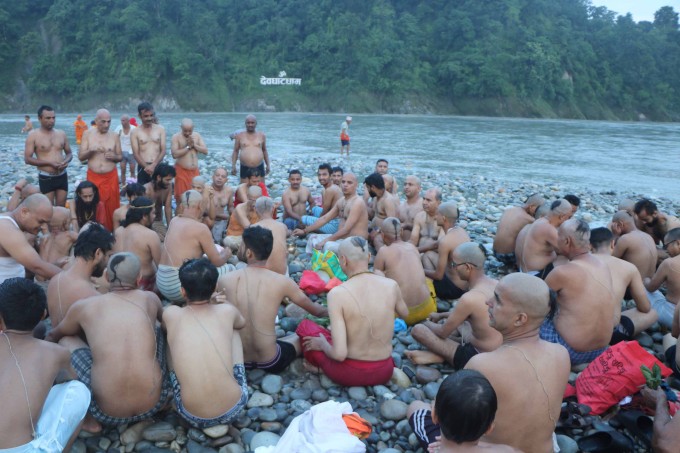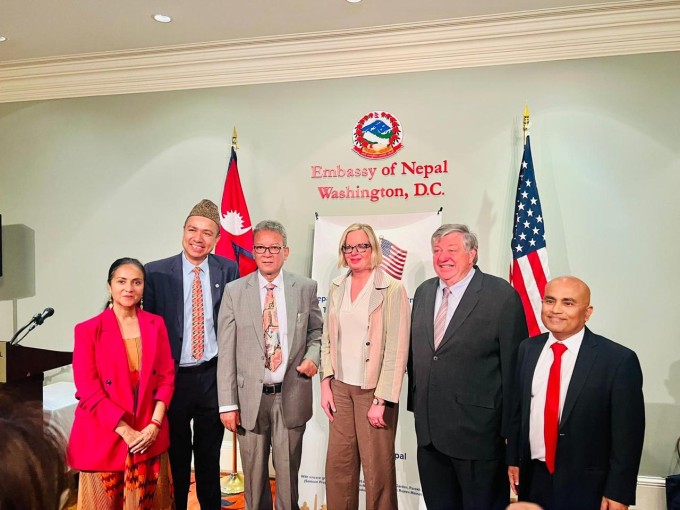More than half of the world's turtle and tortoise species are now threatened with extinction. A group of 51 global turtle and tortoise experts has published a new paper in Current Biology on the extinction risks for these animals. According to the paper, threats include the pet trade, overconsumption for food and medicine, loss of habitat, pollution, invasive species, and climate change.
In Nepal, turtle species are facing threatened largely due to loss of habitat by human encroachment. Some of the animal species will disappear soon if they are not conserved, warned conservationists.
Of the 360 known turtle and tortoise species found across the globe, 187 are threatened, according to the IUCN Red List criteria. Of these, 127 are endangered or critically endangered. Many could be disappeared in the 21st century, they warned. "It is overwhelming when it is all put together," said Kristin Berry, a US Geological Survey wildlife biologist and co-author of the paper who has studied tortoises for more than 40 years.
The Turtle Rescue and Conservation Centre at Salbadi of Arjundhara Municipality-9 in Jhapa, the only body to conserve turtle at the community level, has been at work to conserve turtles. The Centre has endangered turtle species including spotted pond turtle, Indian peacock soft-shell turtle, yellow-bellied slider, Indian flap-shell turtle, elongated tortoise and dark-throated leaf turtle.
Tapil Prakash Rai, who teaches biology at the Mechi Multiple Campus, works as chief conserver at the Centre. He is pursuing PhD in turtle. Eleven years ago, on the initiative of herpetologist Prof Dr KR Khambu, a pond was dug inside the Sukhani Shahid Smriti Park of the Sukhani Shahid Smriti Pratishthan to conserve turtles. Turtles coming out of drying wetlands in search of habitat were rescued and conserved by releasing them into the pond. Later the pond was developed as a turtle conservation centre. The Centre was officially established in coordination with the Amphibian and Reptile Conservation Society Nepal.
Hundreds of researchers, students and tourists interested in turtle have visited the Centre, said Rai. The Centre has 40 turtles of various eight species, and there are other around 100 turtles in ponds dug nearby, he said.
Around 58 percent turtles in Nepal are at the risk of extinction, according to conservationists. Out of 16 species of turtles, four are critically endangered, they said. The critically endangered ones are three-striped roofed turtle, red-crowned roofed turtle, Indian narrow-headed soft-shell turtle and elongated tortoise.
The Pratishthan has established the 'Turtle Conservation and Breeding Centre' in around three bigas of land. Big and small ponds have been dug for turtles, and the opening have been fenced off. There is a big pond in three hectares of forestland within the local Namuna community forest spanning 25 hectares. Surrounded by pine trees, there are small ponds to release turtles into them. There are 10 ponds, big and small, in the Centre.
In Nepal, drying up wetlands and quicksand, main habitat for the animal, has threatened its species. Its poaching for meat has also added to its extinction, said conservationists. There is a challenge to manage habitat and nutritious foods for the endangered animal, they said.
Nilu Phuyal of Arjundhara Municipality-8 spends around nine hours a day in the care of turtles at the Centre. She treats turtles like her children. "Turtles are shy animals. They shy like children. They hide in the water and shrubs when there is a noise," she shared. She has been working for the Centre for the past five years. Her job is to feed fodders to turtles and conserve their eggs.
"Conservation of endangered turtles means to increase their number through breeding. But, this is challenging. The Centre's efforts in conserving turtles are commendable despite dealing with a lack of resources and workforce," said Rai.
Lifespan of a turtle is believed to around 200 years and it live in both land and water. They lay eggs on the banks of rivers and ponds. It is becoming challenging to save these eggs from mongooses, ants and snakes, he said.
The Centre has turtles between 50 grams to 6 kg in weight. Breeding season begins upon the start of monsoon. A turtle lays eggs from two to 10 in number, according to Rai. They lay eggs twice a year if they is fed nutritious food and taken care properly. Eggs are hatched in 170 days in general.
The animal is being smuggled despite criminalising its supply and sale. In a bid to prevent its smuggling, CCTV cameras have been installed in the surroundings of the Centre following the disappearance of turtles here four months ago, he said.
Forty turtles in the Centre are feeding on fodders managed by the Centre. However, other 100 turtles released into other ponds depend on natural food. Turtles feed on grasses, fruits, berries, mushrooms, earthworms, grubs, snails, beetles and caterpillars.
Turtles in the Centre are fed nutritious foods once a day, said Rudra Mani Subedi, manager of the Sukhani Shahid Smriti Park. They are fed fishes four times a month, and bananas, cabbages and apples on a daily basis, he said.
Visitors and tourists have visited the Centre for viewing and observing turtles, he said. Templates have been pasted and boarding has been put up giving information about turtles and their conservation. There is a big statue of a turtle at the Centre. Visiting tourists pose at the statue for photographs. The Pratishthan has so far been bearing expenditures on the conservation of turtles kept. It costs up to Rs 70,000 a month to care for turtles, said Rai.
People have been prevented from organising a picnic in the area as turtles are shy animal, said Subedi. "It affects the breeding of turtle when there is a noise. So, organising a picnic in the area has been banned," he said. Police personnel have conducted a patrol daily in and around the Sukhani Shahid Smriti Park for the security of the area being developed as a main tourist destination of Jhapa district, and the local people, said Subedi.
---
READ ALSO:







